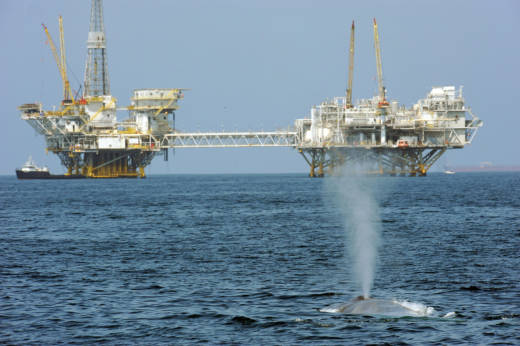Ten whales were reported killed last year after being struck by large ships off the California coast, marking the highest number of deaths since the government began keeping track nearly four decades ago.
What's Being Done to Reduce the Record Number of Whales Hit by Large Ships Near California's Ports?

But some experts believe that figure represents just a fraction of the actual number of deaths, as whales often sink after they are hit, usually without a ship's crew ever knowing about it.
"The ships are so big, the only time you can figure out that you’ve hit a whale is if it gets draped over your bow,” said Captain Jeff Cowan, President of the Council of American Master Mariners.
The staggering size of many of the tankers sailing up and down California's coast makes it nearly impossible for a ship's crew to detect oncoming whales, and even in rare instances when a whale is spotted, most large ships require miles of clearance to change course.
And that’s just during the day. At night, when whales typically come to the surface to feed on krill, there’s virtually no hope of spotting them.
The big problem, say marine conservationists, is that whale feeding grounds are often located nearby major ports, including those at Los Angeles and Long Beach, the two busiest in the country.
"The rich feeding grounds tend to be on the continental shelves and slopes, so near the coasts of the continents," said Chris Mobley, superintendent of the Channel Islands Marine Sanctuary off the Santa Barbara coast. "That also happens to be typically where major ports are."
In an ideal world, says Michael Fishbach, director of the Great Whale Conservancy, ships would adjust their routes to avoid areas with the highest known whale concentrations.
"If we can separate the ships and the whales by space, we have fixed the ship-strike problem," he said.
Accomplishing that, however, is easier said than done. Shipping industry executives have told Fishbach that while they want to avoid collisions, re-routing their ships based on whale migration patterns makes port arrival times less predictable, in an industry where even a one hour delay can cost a company as much as $10,000.
In light of that, Fischbach and other marine conservationists have effectively pushed for more incremental changes, like setting a standard, slower ship speed limit closer to California's ports, a move that's helped reduce harmful engine emissions. They have also advocated successfully for making slight adjustments in some major shipping thoroughfares, like the huge lane off the Santa Barbara coast established by the U.S. Coast Guard and the International Maritime Organization.
"Ultimately we need to get the early stages of the planning of these shipping companies to be more in tune with the areas where ship strikes are a problem and slowly tweak the system to be as whale-friendly as it possibly can be," said Fishbach. Whales, he notes, are an integral part of the ocean ecosystem, and their numbers are now just about a quarter of what they were before the height of the whaling industry in the 1800s.
At the Benioff Ocean Initiative (BOI) at UC Santa Barbara, for instance, scientists are developing thermal cameras, underwater listening devices and satellite-sensing systems that would give shipping companies regular updates on whale activity. The data will be available for free to ship operators, allowing them additional time to adjust their routes more strategically.
Morgan Visalli, a project scientist at BOI, says these efforts are about more than just protecting a beloved and charismatic marine megafauna.
“Whales have a really important role to play in maintaining healthy ecosystems and healthy oceans," she said. "Their populations are still recovering from the times of whaling, so we’re just really excited to be trying to take efforts to reduce the risk of ship strikes ... one of the things impeding their recovery.”
